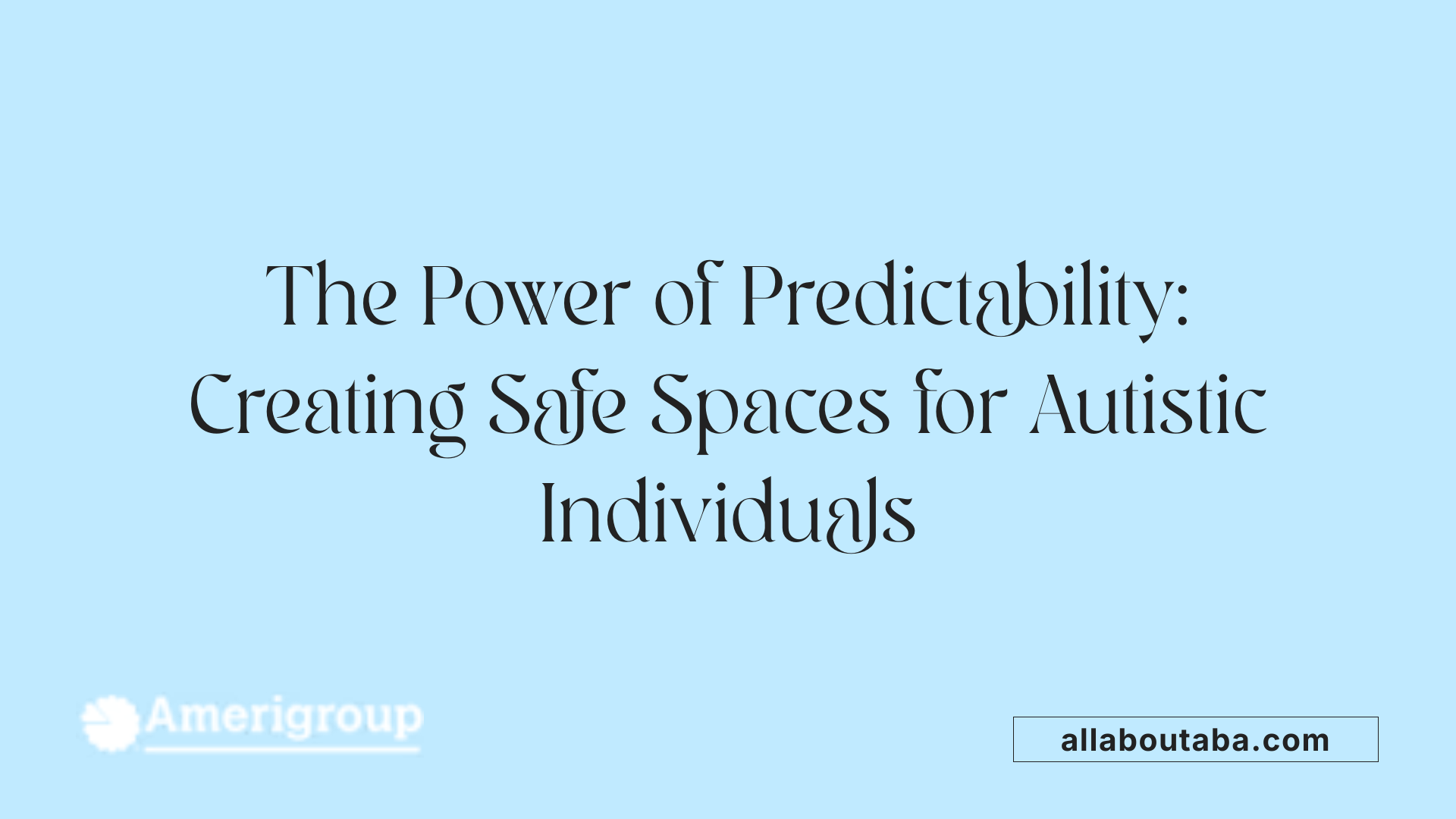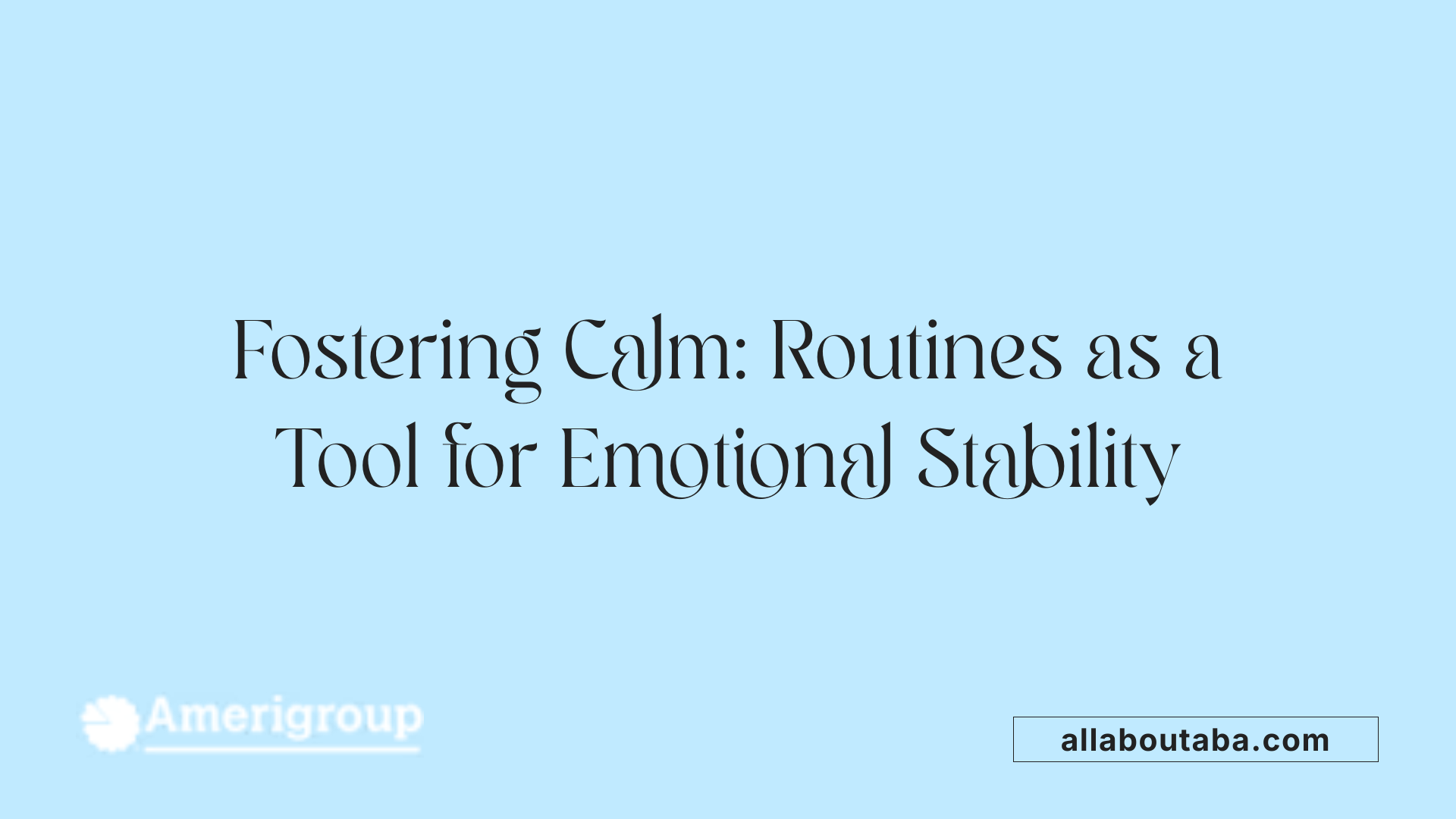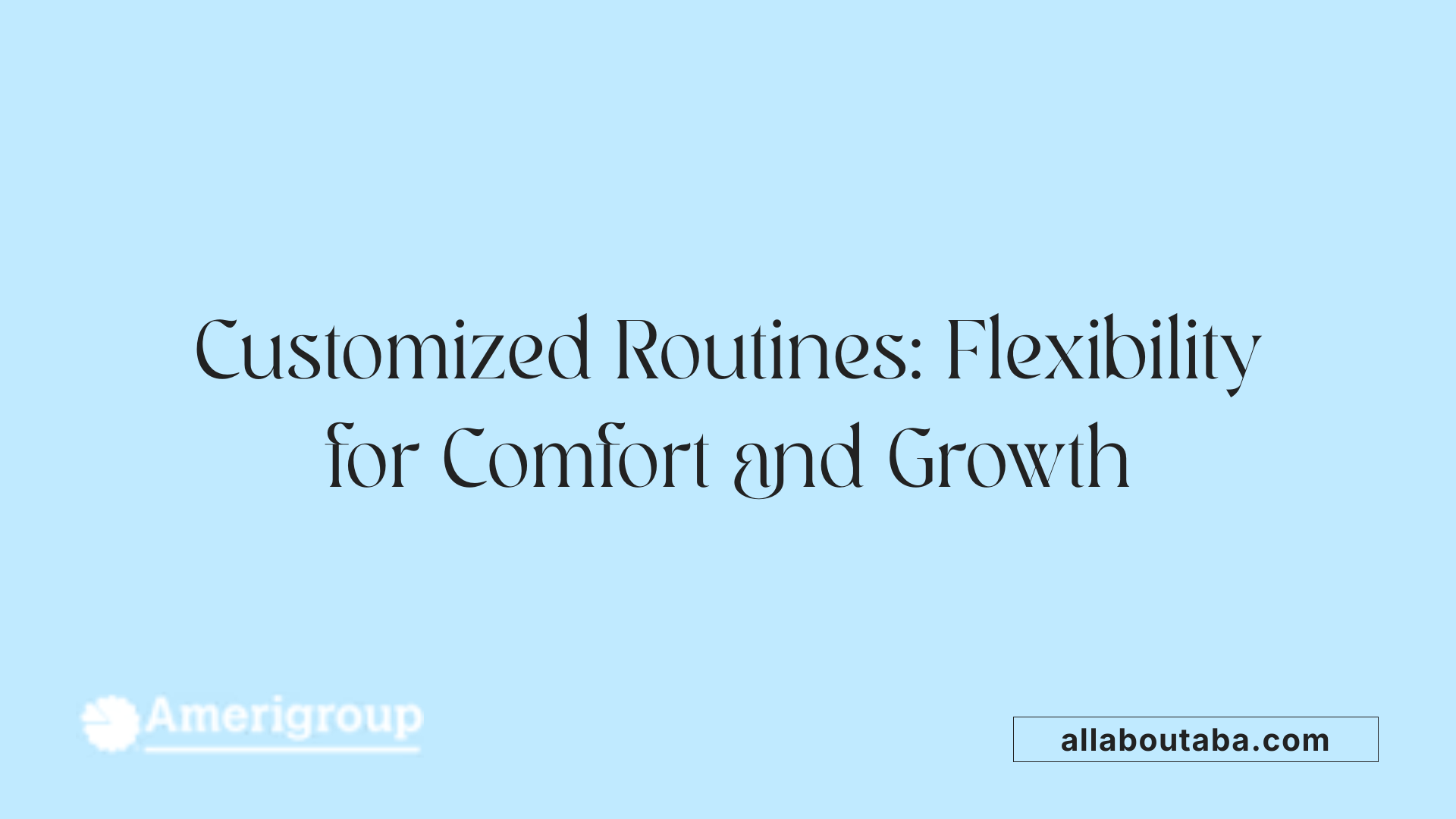Understanding the Power of Routine in Autism
For individuals with autism, routines and predictability are not merely preferences but fundamental tools that support their development, emotional well-being, and daily functioning. These structured patterns provide a stable foundation in an often unpredictable world, helping manage stress, foster independence, and promote social and emotional growth. This article explores the critical importance of predictability in routines for autistic individuals, discussing how structured routines aid their development, ease transitions, and create a sense of security.
The Characteristics and Components of Routines for Autistic People

How do structured routines support the development and well-being of autistic individuals?
Structured routines are vital for supporting autistic people by providing an environment of predictability and stability. These routines help reduce feelings of stress and anxiety that often stem from uncertainty or unexpected changes.
One of their main benefits is that they make daily tasks and transitions smoother. When routines are predictable, autistic individuals know what to expect, which increases their sense of control and confidence.
Creating routines often involves visual supports like charts, schedules, or pictures. These tools help individuals understand and anticipate their day, making learning new skills or adapting to changes easier.
Gradually introducing changes within routines, and preparing individuals ahead of time, fosters adaptability and independence. For example, providing countdowns or practicing routines in advance can lessen anxiety about upcoming modifications.
Routines also support social and emotional growth by easing transition-related worries, preventing meltdowns, and building a sense of security. This stability allows children and adults to focus better on developing communication, social skills, and self-help abilities.
For adults, routines help manage daily responsibilities, reduce burnout, and maintain mental well-being by offering a structured approach to work, self-care, and social interactions. Nonetheless, it remains crucial to customize routines to suit individual preferences and needs.
Too rigid routines, however, can be restrictive and may cause distress if they do not allow for flexibility. Therefore, balancing consistency with adaptability is essential for nurturing independence and comfort.
Why Predictability Is Crucial for Comfort and Stability

Providing a sense of security and stability
Autistic individuals thrive in environments where routines and predictability are present. Having predictable daily schedules allows them to understand what to expect, which creates a feeling of safety and comfort. This stability helps reduce feelings of chaos, overwhelm, and confusion, enabling them to navigate their environment more confidently.
Structured routines often include familiar activities such as regular mealtimes, consistent use of objects, and predictable ways to move through daily tasks. These anchor points serve as familiar cues that reinforce a sense of order and control, easing anxiety and promoting emotional well-being.
Reducing stress and anxiety
Uncertainty and unexpected changes can be significant sources of stress for autistic people. When routines are disrupted unexpectedly, it can trigger anxiety, meltdowns, or withdrawal.
Providing stability through consistent routines allows for better emotional regulation. Visual schedules, timers, and social stories are useful tools to help prepare for changes and transitions, giving individuals time to adjust.
Preparation strategies, such as gradually introducing new activities or providing advance notice of changes, help lessen the impact of surprises. Ensuring that support is in place during transitions can further ease the process, making life feel more predictable and less frightening.
Minimizing sensory overload
Predictable routines also help manage sensory input by creating patterns that reduce chaos and overstimulation. In familiar settings, autistic individuals can anticipate what will happen next, which decreases the chances of sensory overload.
Consistent routines allow individuals to develop tolerance and resilience against sensory stimuli, avoiding triggers that could lead to distress.
By providing a structured environment, routines serve as a calming framework that supports overall mental health and enhances the ability to focus and learn.
| Aspect | Benefit | Supporting Strategies |
|---|---|---|
| Security | Creates a sense of safety | Visual supports, consistent schedules |
| Stress reduction | Eases anxiety | Gradual changes, preparation for transitions |
| Sensory regulation | Minimizes overload | Predictable routines, sensory-friendly activities |
Overall, predictability in routines is fundamental to fostering comfort and stability, offering a nurturing environment where individuals with autism can thrive and develop independence.
Supporting Transitions with Routines and Visual Tools

What role do predictable routines play in managing challenges and transitions in autism?
For individuals with autism, routines and predictability serve as essential tools for navigating daily life and managing transitions smoothly. These routines offer a stable and consistent framework that helps reduce feelings of uncertainty—an often distressing factor for many autistic people.
Having a predictable routine provides a sense of security and control, making unexpected changes less overwhelming. When routines include specific, familiar patterns—such as consistent meal times, everyday activities, and sleep schedules—they help individuals anticipate what’s coming next. This anticipation reduces anxiety and emotional distress, which are common barriers during transitions.
Visual schedules, timers, and transition cues are valuable supports that enhance routine predictability. Visual tools like charts and images clarify upcoming changes and make abstract concepts more concrete, giving autistic individuals the information they need to prepare themselves.
For example, using a visual schedule with images and timestamps helps a child understand the sequence of activities during a school day. Timers can signal when a particular activity will end, easing transitions and decreasing resistance. These tools also allow for gradual adjustments, making adaptations to routines less disruptive.
Supporting transitions through established routines promotes independence and behavioral regulation. When change is expected and clearly communicated, it minimizes disruptive behaviors, meltdowns, and conflicts. This approach encourages confidence in managing daily challenges and builds resilience.
In summary, structured routines combined with visual supports form a powerful strategy to help autistic individuals cope during transitions. They foster emotional regulation, reduce stress, and support successful adaptation to life's ongoing changes. The use of visual schedules and advance planning creates a predictable environment where individuals feel more secure and capable, ultimately enhancing their overall well-being.
Reducing Anxiety and Promoting Emotional Stability

Why are routines significant in promoting stability and reducing anxiety for autistic individuals?
Routines hold a vital role in helping autistic individuals feel more secure and in control of their environment. They provide predictability, which minimizes uncertainty and helps ease feelings of anxiety. When a person knows what to expect, it creates a sense of order and stability that can prevent overwhelming feelings.
Consistent schedules and clear expectations allow autistic individuals to understand daily activities and social interactions better. This familiarity supports emotional regulation by reducing stress caused by unpredictability. Routines also serve as a foundation for developing independence and life skills, offering opportunities for successful task completion.
Visual supports, such as charts and images, are effective tools in this process. They help clarify routines, especially during transitions or changes, by providing concrete visual cues that facilitate understanding. Gradual adjustments to routines, introduced with reassurance, help individuals adapt without experiencing distress.
Flexibility within routines—balancing predictability with gentle adjustments—further supports emotional resilience. It allows for necessary changes while maintaining a sense of security. Providing reassurance and extra preparation during transitions reassures the autistic person, helping them manage potential stress.
Research indicates that routines reduce the likelihood of meltdowns and emotional upheaval by creating a stable environment. This consistency fosters emotional growth, resilience, and overall well-being. By combining predictable routines with visual tools, gradual change, and reassurance, caregivers can promote a balanced approach that encourages adaptability without sacrificing comfort.
Supporting Sensory Regulation and Well-Being through Routine

How do structured routines support the development and well-being of autistic individuals?
Structured routines play a vital role in enhancing the lives of autistic individuals by providing a sense of predictability and safety. When daily activities follow a consistent pattern, they reduce feelings of uncertainty that can lead to anxiety. This predictability allows individuals to navigate their environment more confidently and independently.
Routines facilitate skill-building and promote self-help by allowing individuals to learn tasks at a comfortable pace. Visual supports such as schedules and timers can help in understanding what to expect, easing transitions between activities. Gradually introducing changes within routines helps individuals adapt without feeling overwhelmed.
By lowering stress levels, structured routines support emotional regulation and social interaction. They give individuals a feeling of control, which is especially beneficial during transitions or unfamiliar situations.
For adults, maintaining consistent routines helps manage responsibilities, prevent burnout, and uphold a sense of stability. Yet, personalizing routines is essential. Overly rigid routines can cause frustration or restrict independence. Adjusting routines gradually and including calming or enjoyable activities ensures they meet individual needs, promoting overall well-being.
Flexibility and Individualized Adjustments in Routines

Why are routines significant in promoting stability and reducing anxiety for autistic individuals?
Routines are fundamental for autistic individuals because they offer predictability and a sense of security. When daily activities follow consistent patterns, it helps reduce feelings of uncertainty and anxiety that often accompany unpredictable situations.
Having routine structures with clear expectations allows individuals to anticipate what is coming next, which fosters emotional stability and a feeling of control. This predictability is particularly calming, as it minimizes sensory overload and helps manage stress.
However, while routines are beneficial, they should also include room for flexibility. Incorporating visual tools like charts and images helps in understanding and managing changes. When routines are gradually modified — not abruptly — autistic individuals can adjust more comfortably, building resilience over time.
Tailoring routines to personal preferences is crucial. Some may require more structure or specific rituals that provide comfort, while others might benefit from shared activities that foster social interaction. This personalized approach supports skill development, independence, and emotional regulation.
Supporting routines with gradual modifications prevents rigidity from turning into distress. For example, slowly introducing small changes, offering choices during transitions, or using calming strategies can help individuals adapt without feeling overwhelmed.
In essence, flexible, individualized routines serve as a powerful tool to promote well-being, resilience, and a stable environment where autistic individuals can thrive.
The Transformative Power of Consistent Routine
In conclusion, routines and predictability are vital pillars supporting the lives of autistic individuals. They provide a foundation of security, reduce anxiety, and facilitate emotional and social development. Visual supports, gradual adjustments, and flexible strategies ensure routines meet individual needs while fostering independence and resilience. Emphasizing the importance of routine consistency and thoughtful planning can significantly improve quality of life, making daily challenges more manageable and fostering a sense of control within a complex world. Recognizing and implementing the principles of predictable routines is essential for promoting well-being and enabling individuals with autism to thrive.
References
- Preference for order, predictability or routine
- 12 Benefits of Predictable Routines for Kids with Autism
- The Importance of Routine and Structure for Children with ...
- Why Autistic People Prefer Routine And Structure
- The benefits of familiarity and predictability for autistic people
- The role of routine in supporting people on the autism ...
- Transition Time: Helping Individuals on the Autism Spectrum ...







